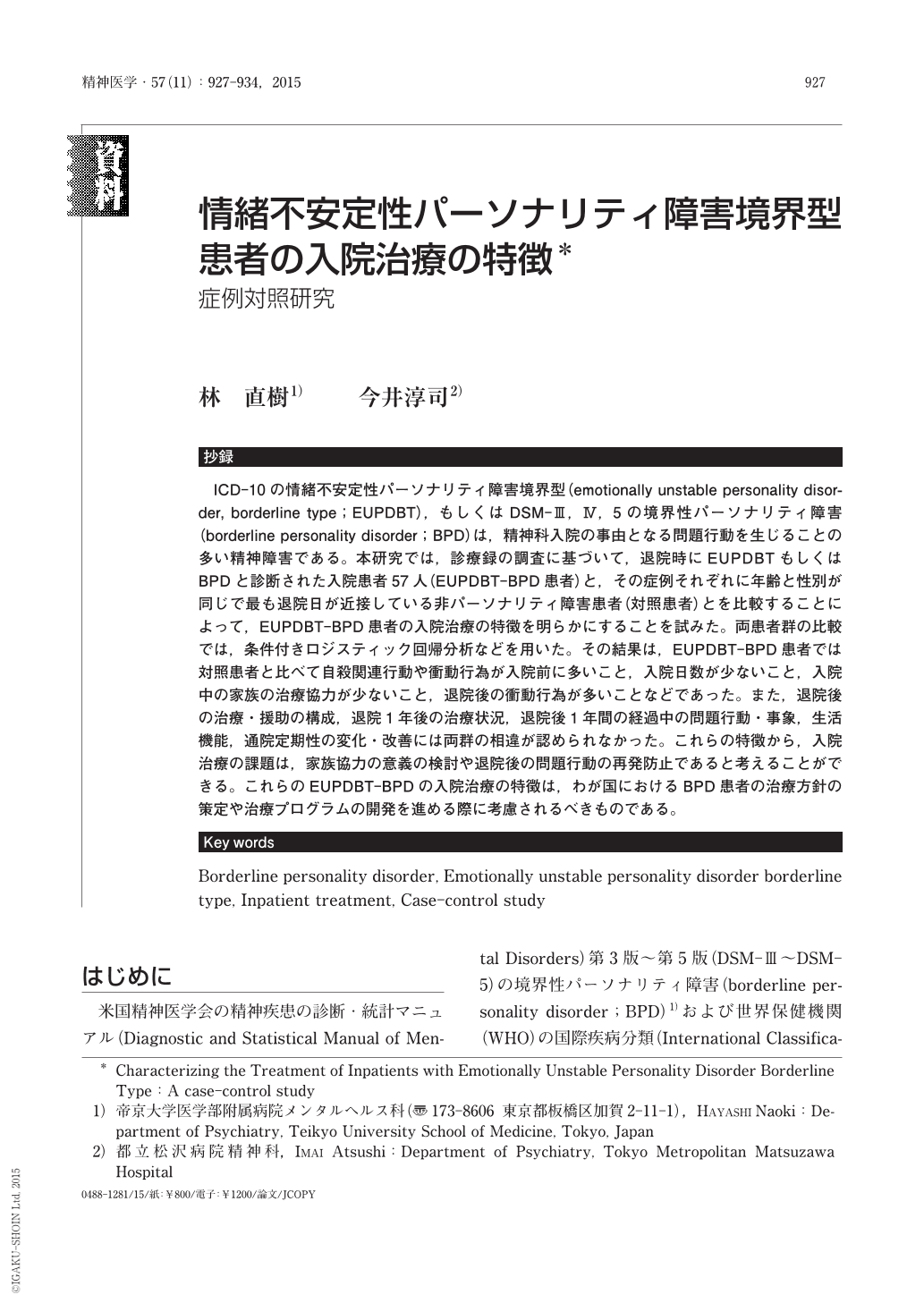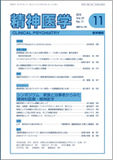Japanese
English
- 有料閲覧
- Abstract 文献概要
- 1ページ目 Look Inside
- 参考文献 Reference
- サイト内被引用 Cited by
抄録
ICD-10の情緒不安定性パーソナリティ障害境界型(emotionally unstable personality disorder, borderline type;EUPDBT),もしくはDSM-Ⅲ,Ⅳ,5の境界性パーソナリティ障害(borderline personality disorder;BPD)は,精神科入院の事由となる問題行動を生じることの多い精神障害である。本研究では,診療録の調査に基づいて,退院時にEUPDBTもしくはBPDと診断された入院患者57人(EUPDBT-BPD患者)と,その症例それぞれに年齢と性別が同じで最も退院日が近接している非パーソナリティ障害患者(対照患者)とを比較することによって,EUPDBT-BPD患者の入院治療の特徴を明らかにすることを試みた。両患者群の比較では,条件付きロジスティック回帰分析などを用いた。その結果は,EUPDBT-BPD患者では対照患者と比べて自殺関連行動や衝動行為が入院前に多いこと,入院日数が少ないこと,入院中の家族の治療協力が少ないこと,退院後の衝動行為が多いことなどであった。また,退院後の治療・援助の構成,退院1年後の治療状況,退院後1年間の経過中の問題行動・事象,生活機能,通院定期性の変化・改善には両群の相違が認められなかった。これらの特徴から,入院治療の課題は,家族協力の意義の検討や退院後の問題行動の再発防止であると考えることができる。これらのEUPDBT-BPDの入院治療の特徴は,わが国におけるBPD患者の治療方針の策定や治療プログラムの開発を進める際に考慮されるべきものである。
Borderline personality disorder (BPD) defined in Diagnostic Statistical Manual of Mental disorders 3rd, 4th, and 5th versions, and its counterpart in International Classification of Diseases 10th revision, i.e., emotionally unstable personality disorder borderline type (EUPDBT), are frequently a cause of impulsive and destructive behaviors, which may lead to psychiatric hospitalization. This chart-review study was conducted for the purpose of clarifying the characteristics of treatment for inpatients with BPD. In this study, 57 patients with EUPDBT or BPD, and 57 age-and gender-matched non-personality disorder (PD) control patients who were hospitalized in a psychiatric center in Tokyo during a 3-year (2009-2011) period were evaluated. The clinical characteristics on admission, during inpatient treatment, and 1 year after-discharge were compared between patients with EUPDBT or BPD and controls. The analyses, including conditional logistic regression analysis, revealed that patients with EUPDBT or BPD more commonly exhibited suicidal and impulsive behaviors prior to admission, needed a shorter hospitalization period and less family assistance during hospitalization, and showed more frequent impulsive behaviors during the 1-year period after discharge than did the controls. However, no significant differences in the outpatient treatment programs prepared at discharge, the improvement in problematic behavior during 1-year period after discharge and the treatment conditions at 1-year after discharge were observed between the patients with EUPDBT or BPD and the controls. These findings imply that the main goals of inpatient treatment for BPD patients are to reconsider the relationship of the patients with their parents and to remedy the recurrent problematic behaviors after discharge. The characteristics of BPD inpatient treatment identified in this study should be considered when further developing treatments for patients with this type of PD.

Copyright © 2015, Igaku-Shoin Ltd. All rights reserved.


